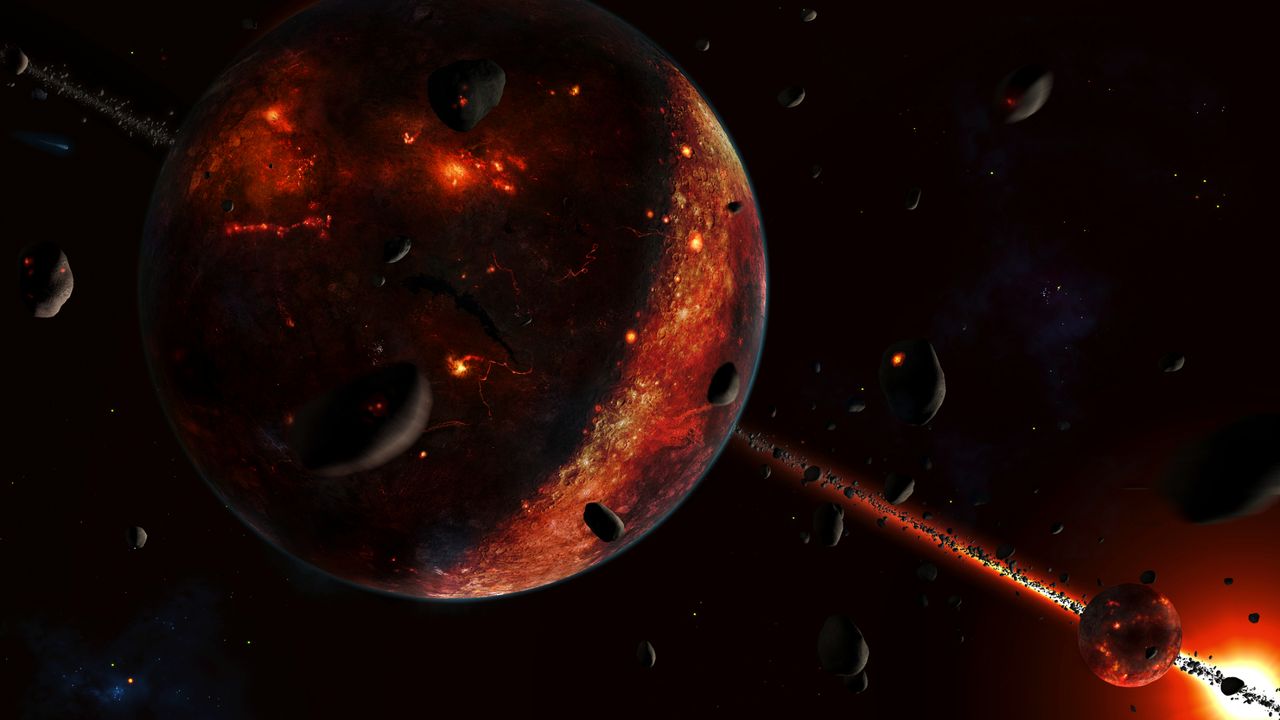Scientists have unveiled what may be the first direct evidence of material from the “proto-Earth,” a primordial version of our planet that existed prior to a cataclysmic impact that formed the moon. The study, published on October 14, 2023, in the journal Nature Geoscience, indicates that tiny chemical signatures of this early Earth have remained largely intact within the planet’s rocks for billions of years. These findings provide a significant glimpse into the original building blocks of Earth and could offer insights into the characteristics of our planet and its neighboring worlds during their formative years.
The research, co-led by Nicole Nie, an assistant professor of Earth and planetary sciences at MIT, highlights a unique potassium isotope imbalance found in ancient rock samples. This anomaly, particularly a deficit of potassium-40, is proposed as a potential fingerprint of material that has survived from the proto-Earth. “We see a piece of the very ancient Earth, even before the giant impact,” Nie stated. “This is amazing because we would expect this very early signature to be slowly erased through Earth’s evolution.”
Approximately 4.5 billion years ago, the early solar system was a chaotic mix of gas and dust that ultimately formed the first asteroids and planets, including the young Earth, which was likely a molten sphere covered in lava oceans. Within less than 100 million years, a Mars-sized asteroid collided with proto-Earth, leading to a catastrophic event that melted and remixed nearly the entire planet’s surface, giving rise to the moon. Scientists have long believed this “giant impact” eliminated most chemical traces of the planet’s early history.
In their quest to explore Earth’s ancient materials, Nie and her colleagues examined samples from diverse locations, including Greenland, the Abitibi belt in Canada, and volcanic sites in Hawaii. The research team specifically sought potassium isotopic differences in these rocks, as potassium can provide clues about the materials that formed Earth. By analyzing these samples, the team discovered that the ancient rocks consistently exhibited lower levels of potassium-40 than anticipated, suggesting they were composed differently from what is typically found in modern Earth materials.
To uncover these subtle signals, the researchers dissolved the powdered rock samples in acid, isolated the potassium, and employed an ultra-sensitive mass spectrometer to precisely measure the ratios of potassium’s three isotopes. Their analysis revealed that the ancient materials contained even less potassium-40 than expected, indicating a preserved signature from the proto-Earth itself.
The team also ran computer simulations to determine whether geological or cosmic processes, such as asteroid impacts, could account for the potassium isotope ratios observed. In all modeled scenarios, the simulated compositions contained slightly higher levels of potassium-40 than what was found in the actual rock samples from Canada, Greenland, and Hawaii. This discrepancy supports the notion that the primitive mantle of the proto-Earth largely escaped alteration from the giant impact that transformed its surface.
While previous studies of meteorites have revealed potassium anomalies, they did not reflect the specific deficit identified in this research. This suggests that the materials that originally formed the proto-Earth may still be undiscovered. “Scientists have been trying to understand Earth’s original chemical composition by combining the compositions of different groups of meteorites,” Nie remarked. “Our study shows that the current meteorite inventory is not complete, and there is much more to learn about where our planet came from.”
The implications of this research extend beyond Earth, as it opens new avenues for understanding planetary formation and evolution across the solar system. By analyzing the remnants of the proto-Earth, scientists aim to piece together a more comprehensive picture of the conditions that prevailed during the early stages of our planet’s history.
